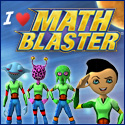Children Learn in Unique Ways – Here’s the Key to Every Child’s Learning Success.
by Mariaemma Willis, M.S. & Victoria Kindle Hodson, M.A.
Part I motivates us to get on the child’s team.
“Lifelong self images are formed by how successful we are in school. The word "failure" often echoes in a person's ear well into adulthood and undermines marriages, parent-child relationships and careers. I wish I had the space to tell my adult clients' stories about the negative consequences of having been labelled a failure in elementary school.”
“When you help your child identify and respect his own learning strengths, interests, talents and needs, you give him roots in the gifts he was born with. When you help your child discover his dreams, passions and goals, you give him the wings of motivation and purpose for becoming an eager, self-directed learner. In both cases your efforts result in a more successful learner.”
“It takes personal attention to discover and nurture the self-directed, eager learner in any child. Unfortunately, the majority of our schools do not have enough time or sufficient numbers of teachers to give children individualized attention; therefore if you want personal attention for your child, you are going to have to take charge and give it yourself. By taking time to discover your child's learning style, you can provide a foundation for your child's lifelong learning success. All children can be self-directed learners if they get the right start, and the right start begins at home.”
If you add up the amount of undivided individual attention most students get during their 12 years in school, it probably comes to about 3 to 6 school days' worth. ~ Peter Kline
“While some students seem to be naturally self-motivated, what I have discovered is that ALL children can be self-directed learners if they get the right start, and the right start begins at home.”
- Celebrate your child’s uniqueness
- Accept your role as a teacher
- Respond rather than react
- Expand your view of where learning takes place
- Stop blindly supporting the bell curve evaluations and definitions of your child
“To keep the vital motivating force for learning alive in your child, celebrate her desire to wonder, play, discover and question; celebrate his skills, interests, accomplishments and uniqueness. Young children who are recognized for who they are don’t do drugs, don’t turn to violence and crime and don’t feel the need to join gangs when they are older.”
“It is estimated that 95% of Kindergarteners feel good about their learning potential. However, 98% of seniors at high school have lost their creative, inquisitive spirits. What happened to all but 2% of these seniors?”
Part II explains the Learning Style Profile.
5 Learning Style Dispositions
- Performing ~ (Move) need for spontaneity and playfulness.
- Producing ~ (Organise) need order and efficiency.
- Inventing ~ (Discover) need intellectual stimulation, competence and a chance to make a practical contribution.
- Relating/Inspiring ~ (Interact) need to contribute to the well-being of others.
- Thinking/Creating ~ (Create) need to contribute new ideas.
12 Talents
- Music ~ skill in playing instruments, singing, humming, whistling etc.
- Math-Logic Reasoning ~ catches on quickly to mathematical patterns, easily memorizes facts and formulas.
- Mechanical Reasoning ~ loves to fix things.
- Word-Language Reasoning ~ a proficiency with words and strong reasoning ability with language.
- Spatial ~ these are the doodlers who love drawing or copying pictures or designs, painting, thinking in pictures and remember what is seen.
- Body Coordination ~ they enjoy or excel at sport or have body coordination talent.
- Interactive-Self ~ often enjoy being alone. They place a high priority on being independent & might even be reclusive.
- Interactive-Others ~ their focus is being social, making friends, understanding people and making others feel good about themselves.
- Interactive-Animals ~ (Dr, Doolittle Talent) they can generate trust in animals.
- Interactive-Nature ~ they have difficulty being indoors.
- Humor ~ can turn an ordinary situation into one that will make others laugh.
- Daily Life Enhancement ~ people who cook, create lovely, liveable, cosy and inspiring places.
“If our schools were set up differently, children would be allowed to begin their school lives guided by their talents. In other words, each child would be absorbed in developing the particular talent areas that he is interested in and the other subjects would be integrated around these talent areas.”
“Without once referring to reading comprehension, arithmetic, science, history or geography, a child can sleuth for information energetically, share her surprise at what she finds, make inferences, draw conclusions, and find additional springboards for collecting even more information.”
Interests
Modality
- Auditory ~ material includes noise, music, songs, lectures, verbal explanations, taped information, stories told aloud, conversations and the sound of one’s own voice.
“The traditional classroom, which is set up to teach mostly to the auditory mode, is serving only about 34% of its students.”
- Visual ~ Here we have the picture and print learners who are although grouped into one category are very different.
- Picture Learners think in pictures and their material includes charts, graphs, designs, forms, layouts, maps, objects, drawings, movies and dramatic performances whereas
- Print Learners think in words and they need to read and write to process information. They benefit from underlining or highlighting the material as they read, taking notes in word-mapping or outline formats, writing down incoming auditory information and translating visual information into words.
-
“Picture Learners are often mistakenly given printed-language techniques instead of pictures to help them learn.”
- Tactile-Kinaesthetic ~ These children learn most effectively when they are able to touch things (tactile) and move around(kinaesthetic) in the learning environment. Movement in the learning environment is usually interpreted as disruptive rather than intelligent, hence these learners often get in trouble for seemingly “not paying attention”. Most of these children end up labelled hyperactive instead of having their legitimate learning needs responded to. My youngest falls into this group & applying the learning tools & methods mentioned in this book have made a huge difference to his progress.
The 4 basic types of tactile-kinaesthetic learners are
- Hands-on learners ~ hands-on activities like construction or assembling
- Whole-Body learners ~ act, walk, play and use whole-body movements
- Sketching learners ~ drawing, colouring and doodling
- Writing learners ~ need to write things out in order to process and understand.
“You were born to learn with your whole body and all your senses. You were not born to sit in a chair eight hours a day and listen to someone talk, or pore over books year in in and year out… Until recently (only minutes on the evolutionary scale) there were no books, no classrooms and no lectures… If we pay attention to the learning of babies and young children, we can see how similar it is to the way our ancestors learned throughout their lives. ~ Peter Kline.
Environment
- Sound ~ note whether the student needs silence or noise e.g. music whilst studying.
- Body Position ~ does he work best sitting at a desk, reclining on a couch, standing at an easel.
- Interaction ~ does the student learn best interacting with others or on its own.
- Lighting ~ note whether the child performs better in bright light or low-to-moderate light. Some children may even prefer the indirect natural sunlight.
- Temperature ~ take note how your child is affected by room temperature when studying.
- Food ~ For children who need to snack regularly throughout the day, healthy food and drinks need to be made readily available.
- Colour ~ when surrounded by their favourite colours students think more positively and feel more motivated.
- Time of Day ~ For most children academic learning is probably done best in the late morning or early afternoon. For some however, it is best in the evening. Be flexible enough to rearrange their schedule of activities to accommodate the child’s preference to better suit their learning needs.
Part III equips us to Coach for Success
Use the stay F.I.T.T. technique to coach your child into learning success.- Focus on solutions ~ When a child is taught to focus on solutions rather than blame, they will be more likely to feel capable instead of fearful, withdrawn and / or rebellious. These children are more aware that problems can be handled and develop an ability to handle setbacks.
“Kids who are raised with solution-focused problem solving instead of consequences or punishment develop the ability to keep going in the face of setbacks.”
- Identify goals ~ Kids who have goals can see their future and are more eager to learn since the goals will give them a sense of purpose.
“Without goals of their own, kids are often passive participants in the goals that other people have for them.”
- Track successes ~ People are more likely to remember the pain of their failures. When students start receiving frowning faces and red marks on their papers, the emphasis changes to “tracking of failures”. Children receive these reports of failure year after year leaving them with a negative impact on their self-esteem.
“Success tracking helps conscientious learners take pleasure in their accomplishments rather than fear failure.”
- Take the pressure off ~ kids are under so much pressure today. It is good to allow them to “do nothing” from time to time. They don’t need continual reminding of their inadequacies. This can cause insecurities and negatively impact their progress.
“At times we have to say “What you are doing is ‘good enough.’”
Visit the Learning Success Institute below for more learning style related products.

A Self-Portrait™ Online Profile: Developed by the authors of “Discover Your Child’s Learning Style”, Mariaemma Willis & Victoria Kindle Hodson, this LearningSuccess™ profile will help you bring out the star in each of your children! Find out how your child learns best, customize curriculum, eliminate destructive learning disability labels, avoid conflicts, and coach for learning success! This profile can be purchased and taken online, and you get immediate printable results and learning strategy recommendations for 5 aspects of learning style: Disposition, Modality, Environment, Interest, and Talents, plus a downloadable Parent/Student Manual. Use this link to receive a discount of $5.00 per profile: you pay only $30 per profile or $25 each for 3 or more.




























No comments:
Post a Comment